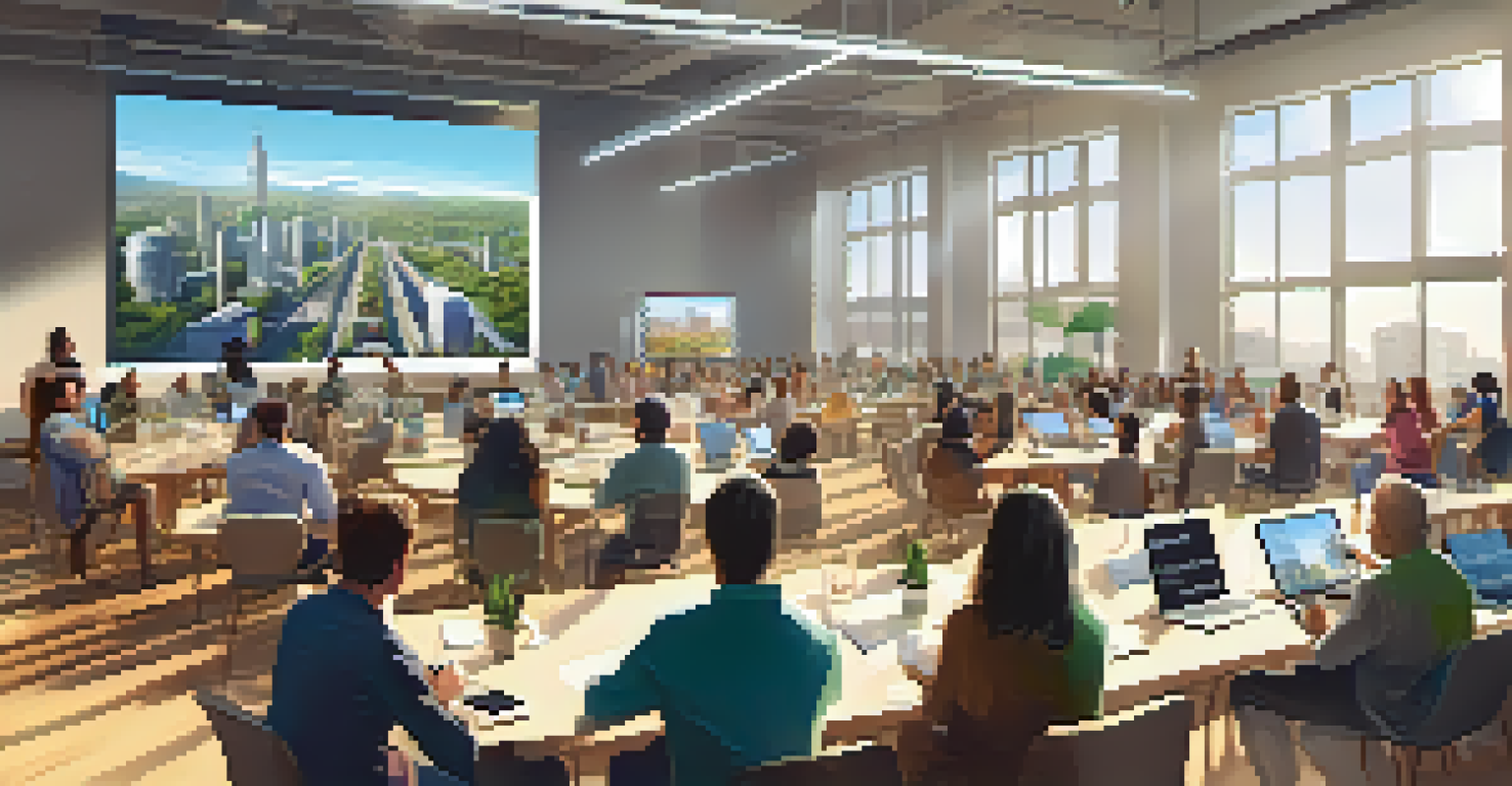Building Smart Cities with Digital Twin Technology

What Are Smart Cities and Why They Matter Today
Smart cities are urban areas that leverage technology to improve the quality of life for their residents. They utilize data from various sources to enhance services like transportation, energy management, and public safety. In a world where urban populations are rapidly growing, creating efficient and sustainable cities is more important than ever.
The cities of the future will need to make use of data and technology to create urban environments that are sustainable, efficient, and livable.
The concept of a smart city revolves around connectivity and integration of systems. This means using IoT devices, sensors, and data analytics to create a seamless urban experience. By harnessing these technologies, cities can optimize resources and reduce waste, making them more livable for everyone.
Ultimately, smart cities aim to create a harmonious environment where technology meets daily life. This transformation isn't just about improved infrastructure; it’s also about fostering community engagement and ensuring environmental sustainability.
Understanding Digital Twin Technology in Urban Planning
Digital twin technology refers to the virtual representation of a physical entity or system. In the context of urban planning, it allows city planners to create a digital replica of their city, simulating real-world conditions and scenarios. This approach enables better decision-making by providing insights into how various factors interact within the urban environment.

Imagine having a detailed 3D model of a city that updates in real-time based on data from sensors throughout the area. This model can be used to test new policies, assess the impact of construction, or even predict traffic patterns. It’s like having a city planner’s best friend—always ready to provide answers and solutions.
Smart Cities Enhance Urban Living
Smart cities leverage technology and data to improve services like transportation and public safety, creating a better quality of life for residents.
By integrating digital twins with smart city initiatives, urban planners can visualize challenges and opportunities more effectively. This proactive approach ensures that cities can evolve in response to changing needs and technological advancements.
Key Benefits of Digital Twin Technology for Smart Cities
One of the primary benefits of digital twin technology is its ability to enhance operational efficiency. By analyzing data from various sources in real-time, city officials can identify inefficiencies and address them promptly. For example, if traffic congestion is detected, adjustments to traffic signals can be made instantly to alleviate the issue.
Digital twins will be integral to the urban planning processes of tomorrow, enabling cities to adapt and thrive in an ever-changing landscape.
Additionally, digital twins allow for better resource management. Cities can optimize their use of energy, water, and other resources by monitoring consumption patterns and making data-driven decisions. This not only saves money but also contributes to sustainability efforts.
Lastly, digital twins foster community engagement by providing citizens with access to real-time data. When residents can visualize how city projects will impact their lives, they are more likely to participate in discussions and offer valuable feedback.
Real-World Examples of Digital Twin Implementation
Cities around the globe are already reaping the benefits of digital twin technology. For instance, Singapore has developed a comprehensive digital twin of the city, which allows planners to simulate urban development scenarios and make informed decisions. This initiative has led to more sustainable urban growth and improved public services.
Another notable example is the city of Barcelona, which uses digital twins to optimize its public transportation system. By analyzing real-time data, the city can adjust bus routes and schedules based on actual demand, improving service reliability for residents.
Digital Twins Revolutionize Planning
Digital twin technology offers city planners a virtual replica of urban environments to simulate scenarios and optimize decision-making.
These real-world applications illustrate how digital twin technology not only improves city planning but also enhances the overall quality of life for urban dwellers. As more cities adopt this approach, we can expect to see even more innovative solutions to urban challenges.
Challenges and Considerations in Implementing Digital Twins
Despite the clear benefits, implementing digital twin technology in smart cities comes with its challenges. One major hurdle is the need for high-quality data. Inaccurate or incomplete data can lead to flawed simulations and misguided decisions, which can ultimately undermine the entire initiative.
Another consideration is the cost associated with developing and maintaining digital twin systems. While the long-term benefits may outweigh the initial investment, cities must carefully evaluate their budgets and prioritize spending. It’s essential to strike a balance between technological advancement and fiscal responsibility.
Lastly, data privacy and security are critical issues that must be addressed. As cities collect vast amounts of data from residents, ensuring that this information is protected from breaches and misuse is paramount. Building trust with citizens will be key to the successful implementation of digital twin technology.
The Future of Smart Cities with Digital Twins
The future of smart cities is bright, especially with the continued evolution of digital twin technology. As cities become more interconnected, the ability to simulate and analyze urban environments will play a crucial role in shaping their development. This technology will empower city planners to create more resilient and adaptable urban spaces.
Moreover, advancements in artificial intelligence and machine learning will enhance digital twins, making them even more effective in predicting outcomes and improving city operations. The integration of these technologies will allow for a more dynamic approach to urban planning, responding in real-time to changes and challenges.
Community Engagement is Crucial
Active citizen involvement in smart city initiatives helps shape policies and improves data collection, making urban planning more responsive to community needs.
In essence, the future of smart cities lies in their ability to harness data and technology effectively. Digital twins will be at the forefront of this transformation, driving innovation and fostering communities that are not only smart but also sustainable and inclusive.
How Citizens Can Get Involved in Smart City Initiatives
Citizen involvement is essential for the success of smart city initiatives. One way residents can engage is by participating in public forums and discussions about urban planning projects. Their input can help shape policies and ensure that the needs of the community are met.
Additionally, residents can leverage technology to contribute to data collection efforts. Many cities have platforms that allow citizens to report issues such as potholes or inadequate public services. This grassroots approach not only empowers residents but also enriches the data available for digital twin simulations.

Finally, staying informed about local initiatives is crucial. By understanding how digital twin technology is being used in their city, citizens can advocate for improvements and support projects that align with their values and priorities.